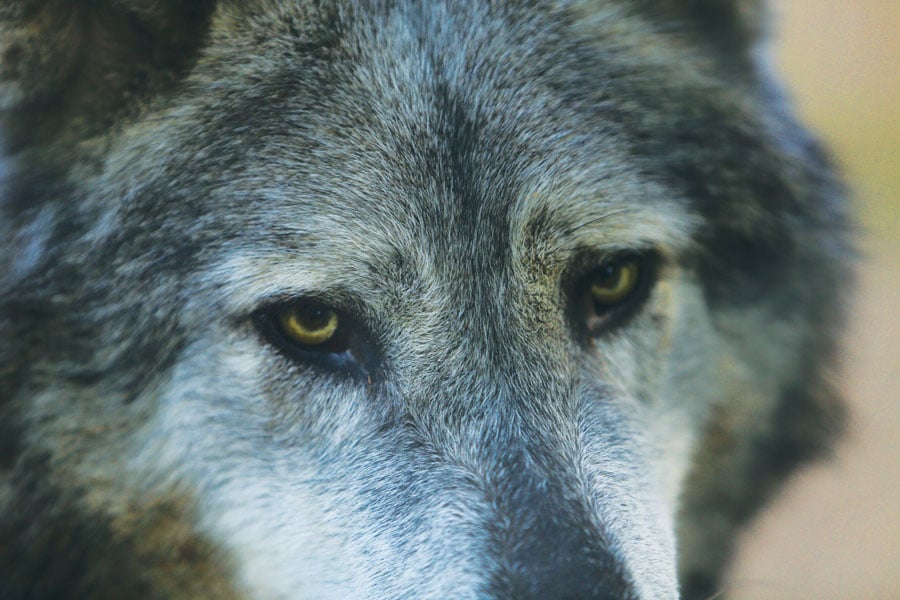In January, companion bills were introduced to the House and Senate that would remove the protections of the Endangered Species Act from gray wolves in Minnesota, Michigan, Wisconsin, and Wyoming. Nicknamed “the War on Wolves Act,” the proposed legislation would strip wolf populations of federal protection—subjecting the species to trapping and trophy hunting.
If passed, delisting of the controversial red wolves of North Carolina, Mexican gray wolves of New Mexico and Arizona, and various other endangered species are likely to follow.
Over two million gray wolves once roamed the continent. Yet by the turn of the century such wolves had retreated to remote parts of Alaska, Canada, and to a smaller extent the Great Lakes region.
In 1995, a small population of gray wolves were brought from Canada to Yellowstone National Park. Wolf populations have grown to 1,700, naturally dispersing to Montana, Wyoming, Washington, Oregon, and Northern California.
Conservationists view the reintegration of the gray wolf as a success. In addition to steady population growth, wolves have often transformed the ecosystems and physical geography of the lands they roam.
As an apex predator, wolves suppress the abundance and behavior of their prey, in turn opening up nutrients and reshaping ecosystems.
For example, in Yellowstone National Park, the overabundance of deer and elk led to overgrazing, causing the devastation of willow, aspen, and cottonwood trees. Yet the reintegration of the gray wolf forced the grazers to keep moving. Vegetation began to regenerate, leading to the reemergence of birds and bears, beavers and otters, fish and reptiles. The regenerating forests also stabilized eroding river banks.
Red wolves have also helped maintain ecological balance in North Carolina. The species feeds on deer, raccoons, rabbits, and other rodents, initiating trophic cascades that result in abundant habitat for beavers, fish, songbirds, and more.
Opponents of wolf reintegration are a vocal group from small ranchers to hunters to the industrial agriculture and energy industries.
Indeed, the loss of cattle or sheep due to wolf depredation can be devastating for small ranchers. Though most states compensate ranchers for confirmed losses due to wolves, such kills are tricky to verify.
Yet the most powerful anti-wolf contingent is comprised of industrial agriculture and the oil and gas industries. While their lobbying efforts often invoke the threatened livelihood of small ranchers, the industries’ primary hope is to operate on lands currently protected for the wolf among other species.
In North Carolina, anti-wolf factions pressured the U.S. Fish and Wildlife Service to end the red wolf reintegration program and remove wolves from private land. The Fish and Wildlife Service has drastically scaled back red wolf recovery plans to appease private landowners and hunters.
At its core, the political battle over wolf populations across the United States has come to symbolize the country’s differing views on conservation and the Endangered Species Act.
Conservationists see the Endangered Species Act as a way to legally protect species from the threats of industry and development. A recent Tulchin Research survey suggests that support of the Act crosses party lines; 90 percent of registered voters support the legislation.
Yet others view the Endangered Species Act as an easy way to lock up natural resources. Rob Bishop (R-Utah) argues that the Endangered Species Act “has never been used for the rehabilitation of species. It’s been used for control of the land.”
President Trump has said he will oppose all environmental policies that get in the way of energy and infrastructure projects, and he has appointed Ryan Zinke (R-Montana) for Interior Secretary. Zinke has voted to remove wolves, grizzlies, and lynx from the endangered species list, and notoriously featured a dead gray wolf on his 2011 Christmas card.
Was Zinke’s Christmas card a testament to his belief in environmental deregulation or an eerily prophetic caricature of the future of wolves in the continental United States?
Wolf populations have waxed and waned with the currents of American expansionism and politics. The War on Wolves Act could be their final curtain call.








